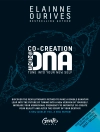This book focuses on the new possibilities and approaches to social modeling currently being made possible by an unprecedented variety of datasets generated by our interactions with modern technologies. This area has witnessed a veritable explosion of activity over the last few years, yielding many interesting and useful results. Our aim is to provide an overview of the state of the art in this area of research, merging an extremely heterogeneous array of datasets and models.
Social Phenomena: From Data Analysis to Models is divided into two parts. Part I deals with modeling social behavior under normal conditions: How we live, travel, collaborate and interact with each other in our daily lives. Part II deals with societal behavior under exceptional conditions: Protests, armed insurgencies, terrorist attacks, and reactions to infectious diseases. This book offers an overview of one of the most fertile emerging fields bringing together practitioners from scientific communities asdiverse as social sciences, physics and computer science. We hope to not only provide an unifying framework to understand and characterize social phenomena, but also to help foster the dialogue between researchers working on similar problems from different fields and perspectives.
表中的内容
Introduction.- Part I – Social Behavior under normal conditions.- Human mobility.- Face-to-face interactions.- Collaboration networks.- Online interactions.- Human behavior in financial markets.- Social Contagion.- Modeling and predicting human infectious diseases.- Part II – Social Behavior under stress.- Behavioral changes and adaptation induced by epidemics.- Uncovering criminal behavior with computational tools.- Crowd behavior.- Modeling terroristic escalations and warfare.- Discussion and Conclusion.












